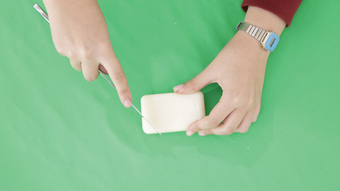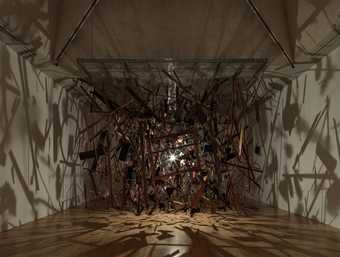
Henry Moore OM, CH
Recumbent Figure
(1938)
Tate

Louise Bourgeois
Spider
(1994)
ARTIST ROOMS
Tate and National Galleries of Scotland. Lent by The Easton Foundation 2013

Rachel Whiteread
Untitled (Twenty-Four Switches)
(1998)
Tate

Sir Grayson Perry CBE RA
My Gods
(1994)
Tate
Carving
Carving is a sculptural technique that involves using tools to shape a form by cutting or scraping away from a solid material such as stone, wood, ivory or bone.






















































































